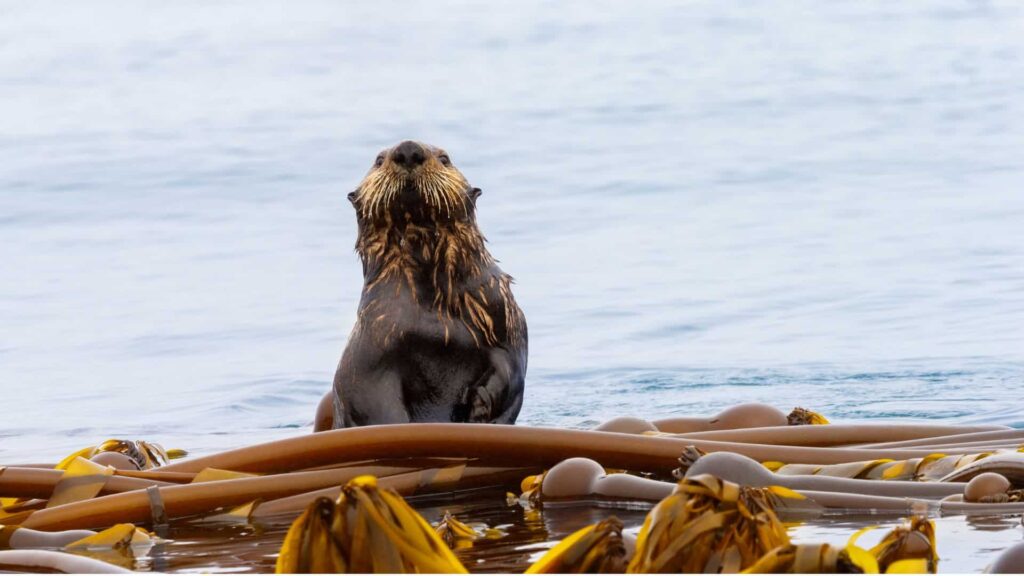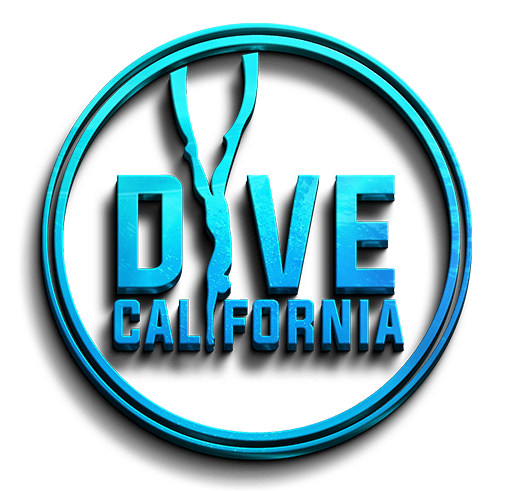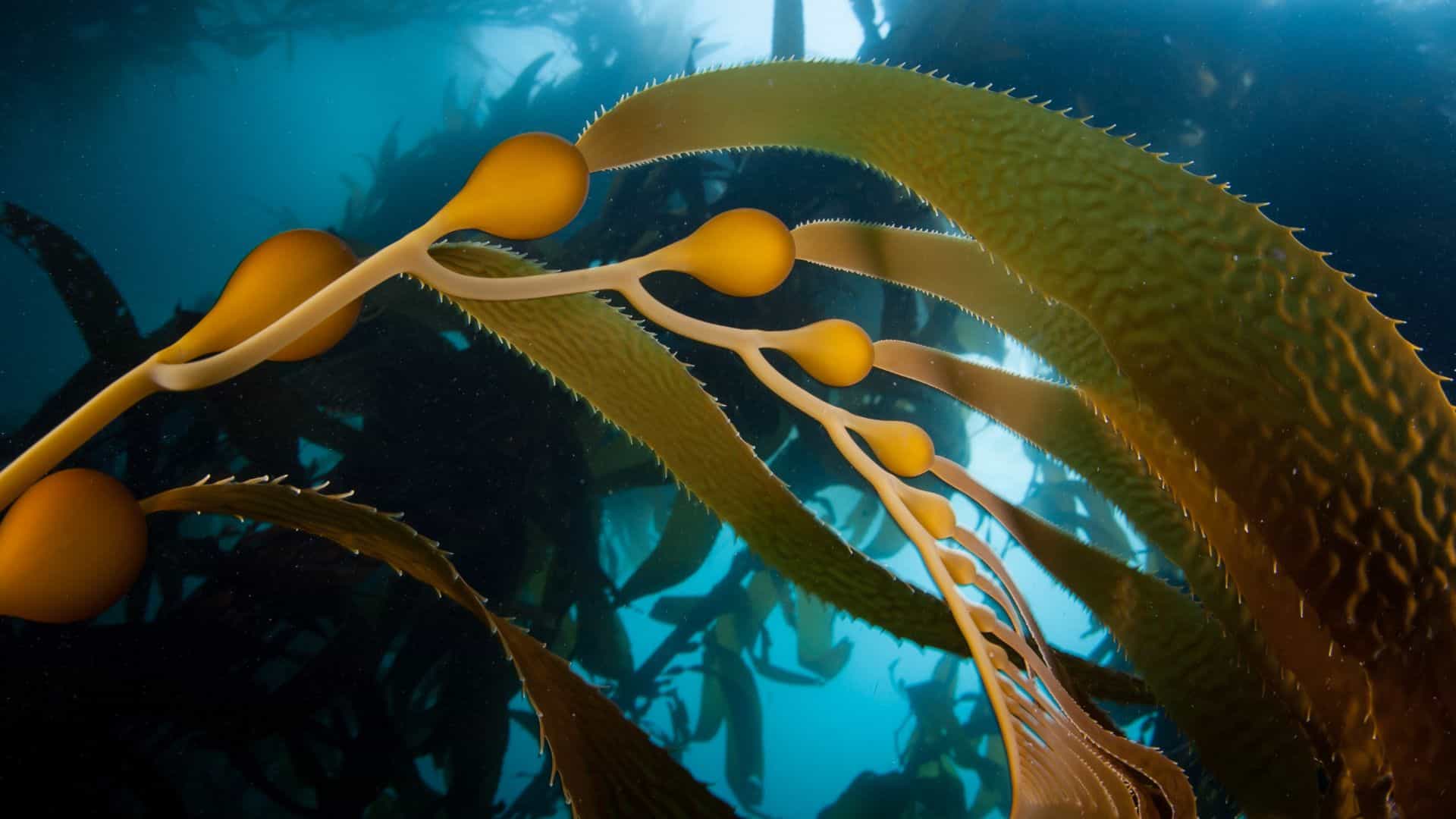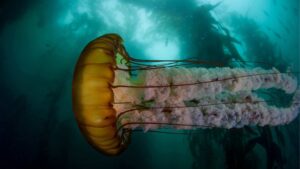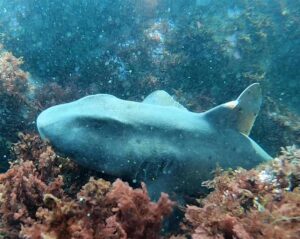A Guide to Scuba Diving in California
Looking for a dive destination that stands apart? Look no further than California, USA.
Don’t let the cooler water dissuade you from exploring the magical dive sites along the California coast. The Golden State is home to kelp forests, amazing marine mammals and birds, and unique underwater environments you won’t find anywhere else.
Dive Right In:
- Why Scuba Dive in California?
- When’s the Best Time to Scuba Dive in California?
- Best Places to Scuba Dive in California
- Best Places to Scuba Dive in Northern California
- Best Places to Scuba Dive in Southern California
- Tips for California Scuba Diving
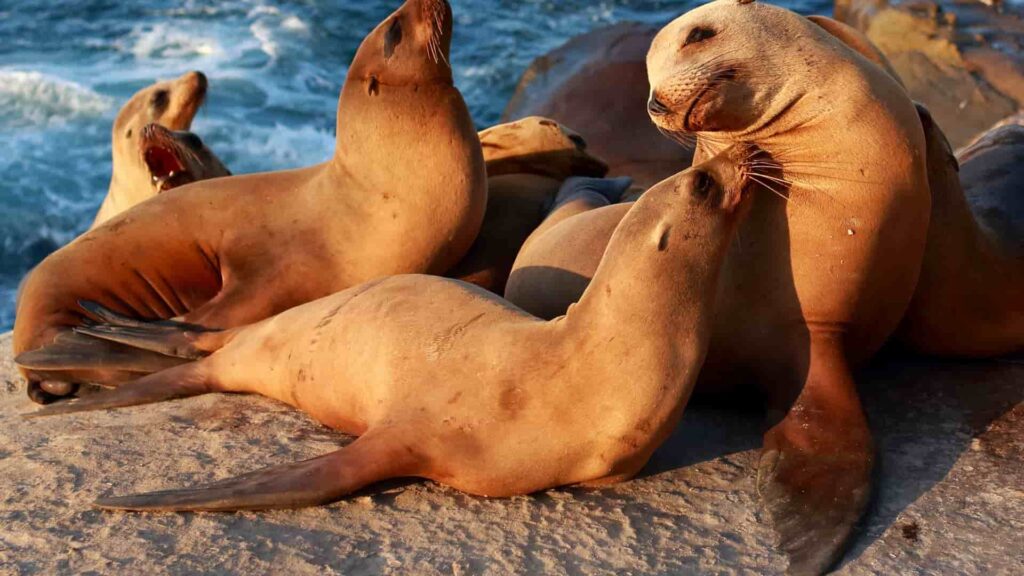
Why Scuba Dive in California?
Most people associate California with surfing, not scuba diving. But California has excellent scuba diving up and down its lengthy coastline, and the local divers are known for their passion, skill, and self-reliance.
Many divers come to California for:
- Kelp forests
- California’s unique marine life
- California’s laid-back “surf culture”

Kelp Forests
The kelp forest is the state’s most dazzling underwater feature and the biggest draw for scuba divers.
Kelp forests are home to fish, marine mammals, and sea stars, but scuba divers get the most delight from the kelp forest itself. Their size and density are dazzling. On sunny days, the kelp forests ripple with golden light and deep shadows, creating dazzling contrasts that you won’t find in many underwater environments. The word “majestic” is the most cliché way of describing kelp forests–but it’s probably the best word. They are majestic.
If you want to dive a kelp forest, but you’re worried about diving in cooler water, then California is the best place to go. California is one of the warmest places in the world that has kelp forests. Go a little further south, toward the equator, and they cease to exist. Temperate water diving is more comfortable when you get to enjoy warmer surface temperatures before and after a dive.

California Marine Life
California is home to many endemic marine species. There are plenty of schooling fish and a huge variety of invertebrates and marine mammals (including harbor seals, elephant seals, sea lions, and sea otters). The most eye-catching species is the bright orange Garibaldi, one of the few damselfish found in temperate waters.
California has too many endemic species to list, but here are just a handful of the species you can find:
- Garibaldi (the bright orange-colored fish)
- Black sea bass (giant sea bass)
- California two-spot octopus
- California moray eel
- Shovelnose guitarfish
- Horn shark
- Broadnose sevengill shark
- California spiny lobster
- Señorita
- Sargo
- California surfperch
- Yellowtail
- Sarcastic fringehead
- Common dolphin
- California sheephead
- California scorpionfish
- Kelp bass
- Gray whale
You can also find a variety of nudibranchs, the most famous being the “Spanish shawl.”

California Culture
California is a great destination for diving because there’s so much to do on your surface intervals.
The state is known for its laid-back vibes and surf culture. You can explore rad surf towns, visit theme parks, and enjoy a wide array of international cuisine. NorCal has excellent seafood, while SoCal is renowned for its Mexican food and margaritas.
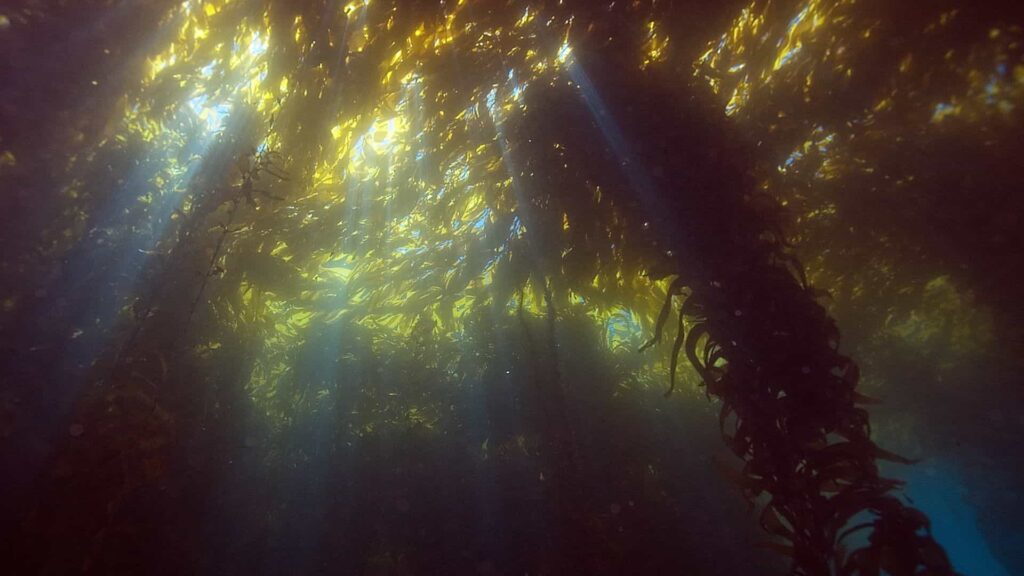
When’s the Best Time to Scuba Dive in California?
You can go scuba diving in California throughout most of the year. The winter months from December to February usually have the fewest days of diving due to rough weather.
Fall is widely considered the best season to go scuba diving in California. Fall has warmer water and better visibility, which makes it easier to spot marine life.
However, the warmer water does cause the kelp forests to be smaller and less spectacular in the Fall months. Kelp gets thin and brittle in warmer water.
The kelp beds are larger and more luscious in the colder Spring months, from about February to April.
There’s also good diving in the summer, although you may have to contend with summer beach crowds and higher hotel rates.
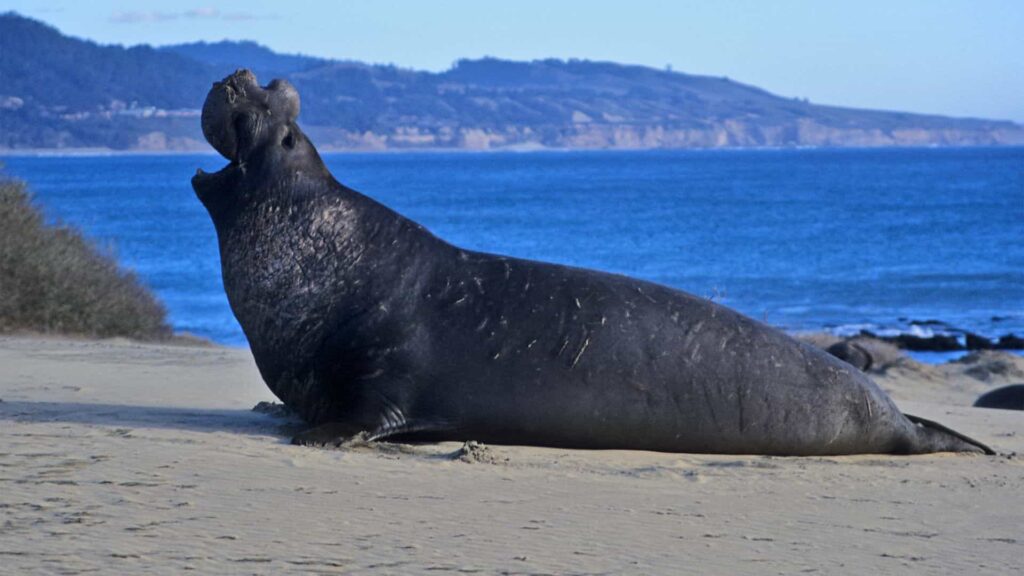
Best Places to Scuba Dive in California
Looking for the best places to scuba dive in California? Check out our list below.
- Northern California
- Monterey Bay
- Point Lobos
- Big Sur
- Southern California
- Channel Islands
- Catalina Island
- Long Beach Oil Rigs
- San Diego
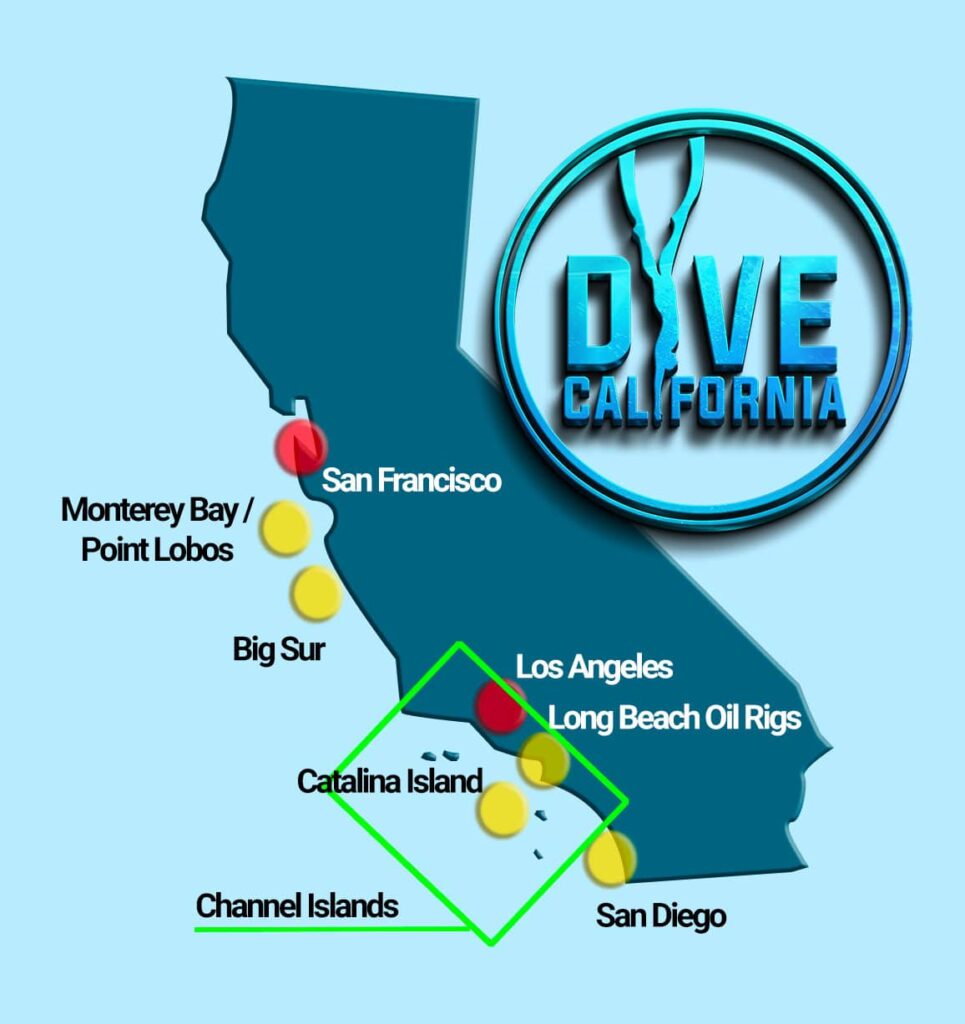

Best Scuba Diving in Northern California
Northern California, with its tall and dramatic cliffs that are pounded by surf, is home to equally awe-inspiring views underwater. The kelp forests here are mostly made of bull kelp, and most diving is done from the shore.
In Northern California, you’ll find the best diving at:
- Monterey Bay
- Point Lobos
- Big Sur
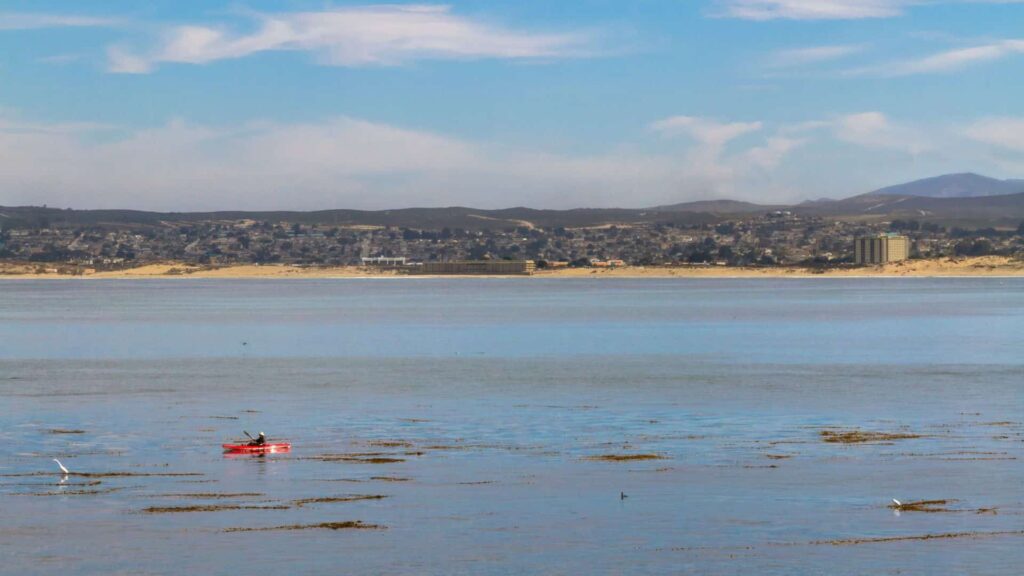
Monterey Bay
Monterey Bay is the most popular place to dive in NorCal. Most divers make a shore entry from the beach. Just beyond the sand are kelp forests, algae reefs, rock formations, and underwater canyons. The kelp forest off North Monastery beach is one of the prettiest in California.
Monterey Bay is home to seals and sea lions, but most visitors want to spot the cuddly sea otter. There’s no better place to do sea otter spotting.
Because the Bay is so wide (276 miles of shoreline), there’s a wide variety of dive sites to explore. So long as you’re okay with shore diving, it’s easy to create a diverse, multi-day dive itinerary.
There are plenty of dive centers in Monterey Bay, and most offer guided dives and equipment rentals.
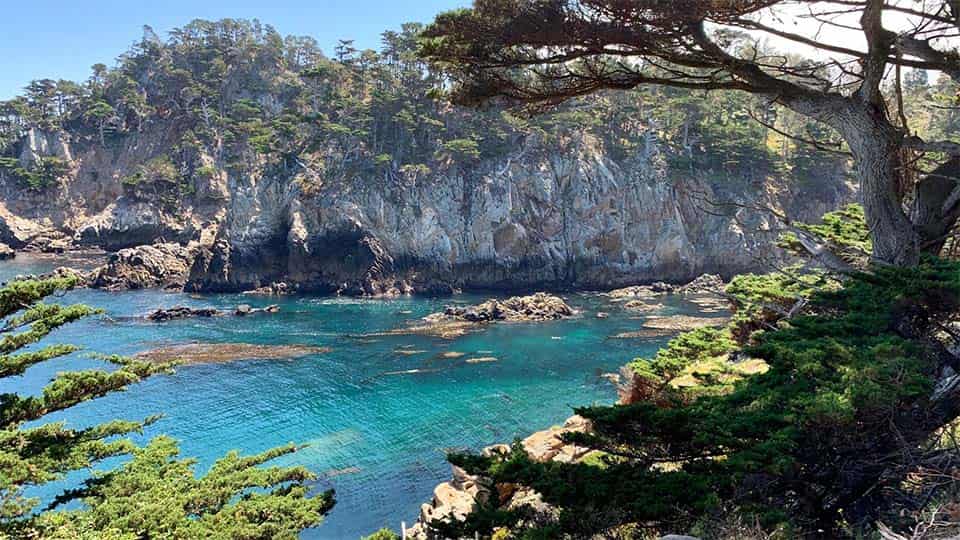
Point Lobos
Point Lobos is part of Monterey Bay, but it’s a dive site worthy of its own distinction. You need to make reservations to dive here, and diving permits are limited to 15 per day. Thankfully, you can make reservations up to 2 months in advance.
Why is this area so well-preserved?
In short, because it’s beautiful.
Point Lobos is a continuous series of rocky coves that feature spectacular kelp beds and colorful, sloping walls brimming with marine life. Throw in some underwater pinnacles and a few swim-throughs, and you’ve got the making of a world-class dive site.
If you’re planning a dive trip to Monterey Bay, it’s well worth making a dive reservation at Point Lobos.

Big Sur
If you’re an advanced (and highly adventurous) diver, then set your compass bearing toward Big Sur.
Big Sur is known for its steep, dramatic coastline, with big rock formations in the shallows that break the surf. Naturally, there are amazing reefs to explore here. Kelp beds, too, but mostly reefs.
Big Sur is often whipped by big waves and strong surges, even on “calm” days, so divers need to be ready for less-than-smooth sailing. But for those divers who can deal with rough and unpredictable conditions, Big Sur offers a raw nature experience that fewer divers get to experience.
Dive operators in Monterey Bay will usually schedule one or two boat dives per month at dive sites in the area.
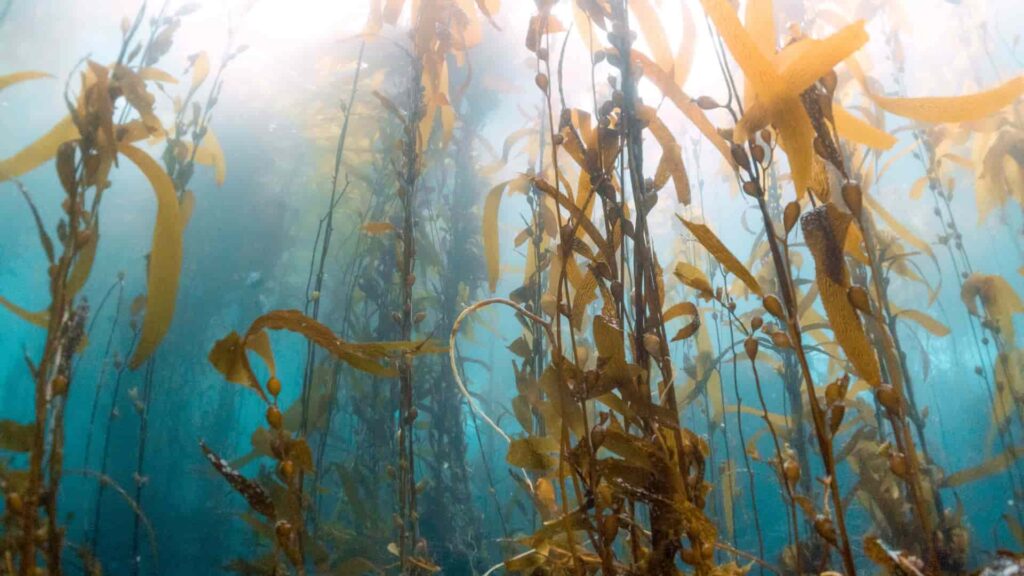
Best Scuba Diving in Southern California
If you’ve never done cold water diving, Southern California is a good place to start because the air temperature is very warm for most of the year (Northern California is much cooler by comparison). It’s easier to try cold water diving when you can warm up in the hot sun after each dive.
In Southern California, you’ll find the best diving at:
- Channel Islands
- Catalina Island
- Long Beach Oil Rigs
- San Diego
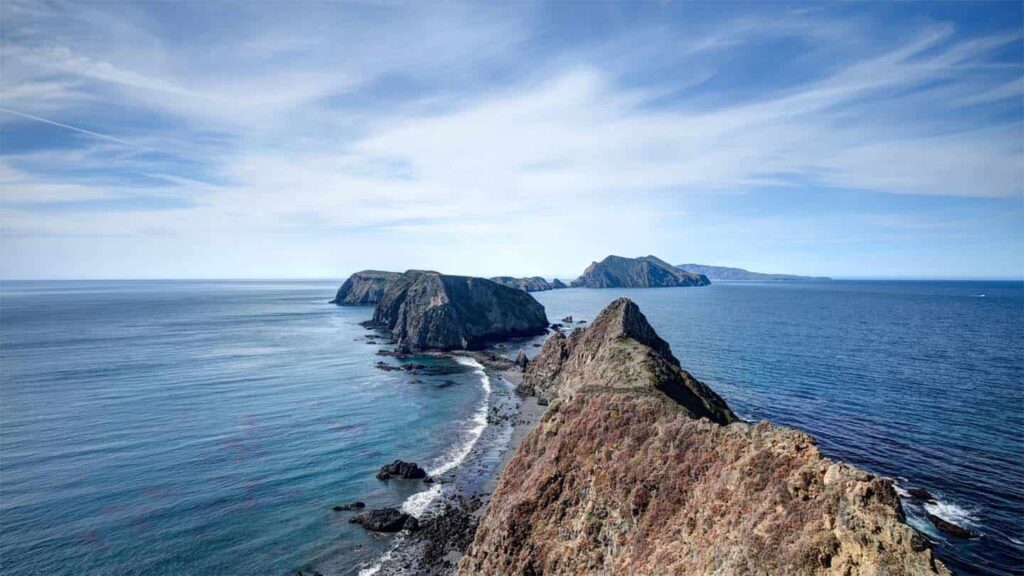
Channel Islands
You’ll find some of the best scuba diving in California offshore at the Channel Islands.
Of the 8 islands in the archipelago, only 1 is inhabited by people, and nearly all of them are protected by marine sanctuaries.
The islands are located close enough to shore that most of them can be reached in no more than a 2-hour boat ride. But they’re far enough offshore that they’re not impacted by the urban runoff that spoils the visibility at coastal dive sites. At the Channel Islands, you can expect 40 to 50-foot visibility year-round, which is the best you can ask for in temperate water diving.
In theory, the best way to dive the Channel Islands is to jump on a liveaboard. A liveaboard is undoubtedly the easiest (and sometimes only) way to reach the Channel Islands’ most spectacular dive sites. Typically, you’ll pay a few hundred dollars for 3 to 5 days of diving.
Be aware that in California, liveaboard vessels are not fancy yachts. They’re smaller vessels that usually have bunk bed-style accommodations. Don’t expect a private cabin or luxury amenities. You’ll get the most value from this type of liveaboard if you’re an underwater photographer, lobster diver, or an obsessive kelp diving enthusiast.
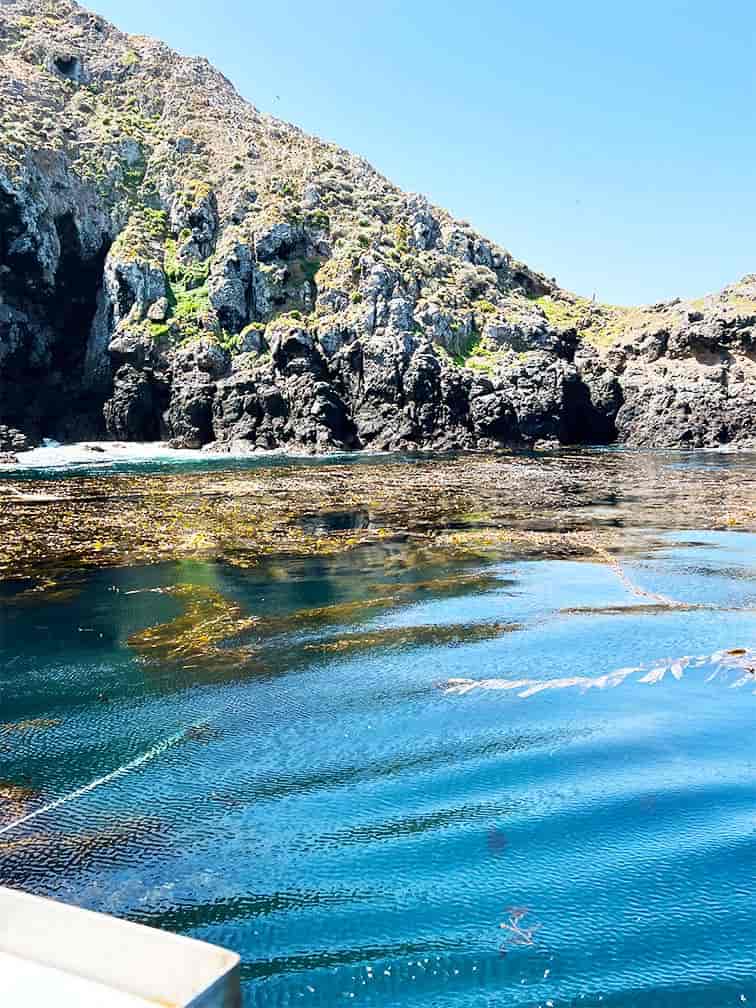
Otherwise, you could book a Channel Islands day trip from the mainland. Spectre is one of the best in the business. This dive boat leaves from Ventura and makes day trips to either Anacapa or Santa Cruz Island, depending on how the ocean’s behaving. They run dive trips on Friday, Saturday, and Sunday, and you can get a discounted weekend package if you want to make a multi-day dive trip. When you’re done with your diving, you can warm up in their hot tub and enjoy a cold beer.
As of 2023, Spectre is the only dive operator that makes regular trips to the Channel Islands. Your only other choice outside of a liveaboard is to book a private charter, which is far more expensive.

Catalina Island
Catalina Island is part of the Channel Islands, but it’s worthy of its own distinction for several reasons.
First, you can actually spend the night on Catalina (and not just in a tent!). The small resort town of Avalon has hotels, resorts, and vacation rentals that have made it a popular getaway for Southern Californians.
[But you’re not looking for civilization, are you? You’re a scuba diver!]
The Casino Point Dive Park is the main playground for divers. Don your gear at the backside of Catalina’s famous casino building, then hop down a short flight of stairs that immediately drops you into 15 feet of water. It’s one of the easiest shore entries you’ve ever done.
Most of the dive site covers a depth between 20 and 60 feet (6 -18 meters), though you can go as deep as 100 feet (30 meters). You’ll get to explore sloping rock reefs and kelp beds, and there are fun things to discover throughout the dive site, including several wrecks and a memorial to Jacques Cousteau.
Casino Point Dive Park is also one of the best places in California to spot the enormous Black Sea Bass (also known as the Giant Sea Bass). You’re bound to find one (or several) in just one or two dives.
Heads up: Catalina is expensive. In addition to the cost of diving, you’ll have to pay for ferry tickets to the island and deal with some pretty extravagant hotel rates. If you’re on a budget, it’s best to do your diving on a day trip.
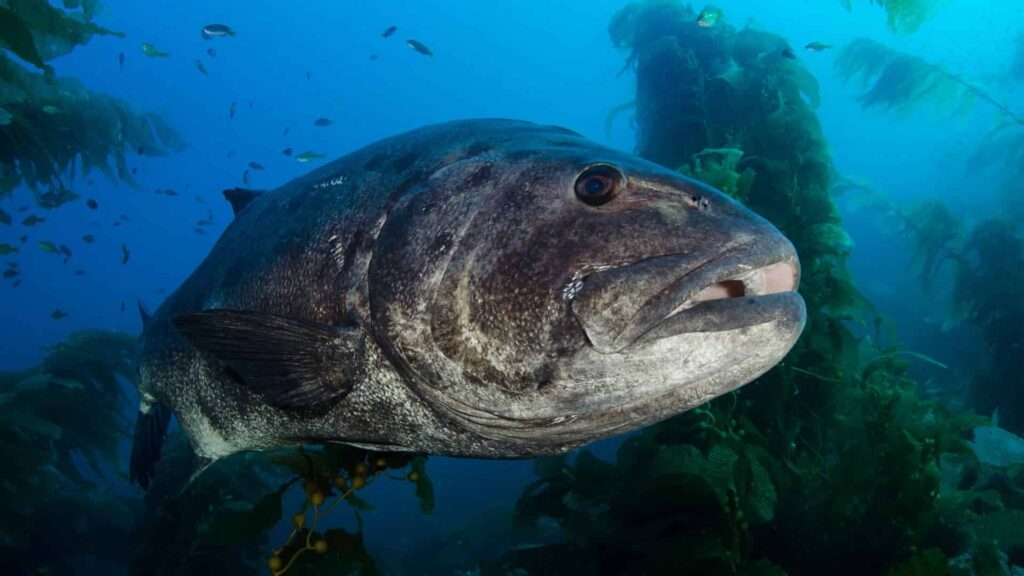
Long Beach Oil Rigs
The abandoned oil platforms offshore of Long Beach make for curiously rustic dive sites. There are 3 platforms: Eureka, Ellen, and Elly, and now that their fracking days are done, they make for excellent artificial reefs. This is truly the most unique wall dive in California.
The supports are covered in colorful growth and home to invertebrates, rockfish, and sea lions. Some lucky divers have reported seeing whales and great white sharks just beyond the rigs, swimming in the blue.
The oil rigs are for advanced divers only because of the unpredictable conditions and “bottomless” nature of the oil platforms. Divers must have good buoyancy control and be comfortable dealing with surge.
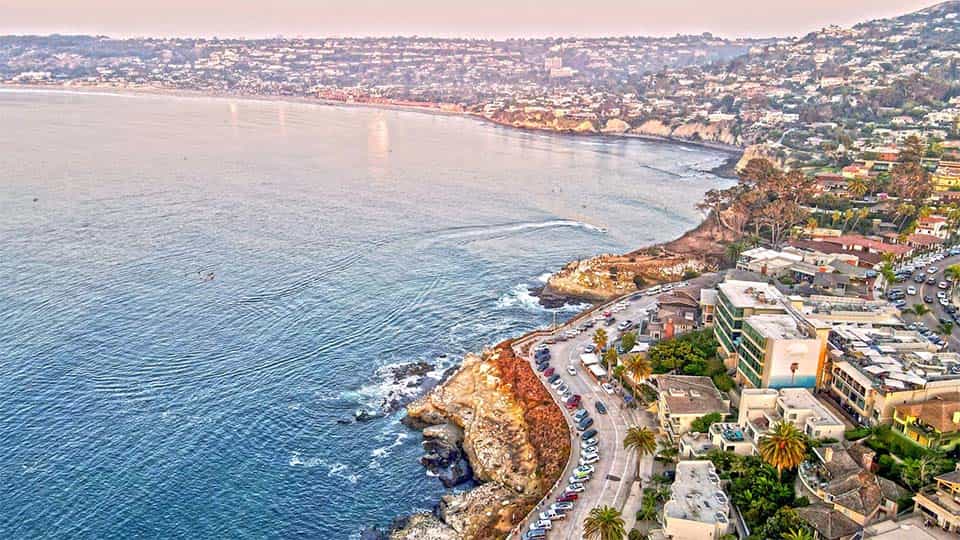
San Diego
Of all the dive spots in California, San Diego is the most diverse, offering the most places to dive and the most ways to dive.
La Jolla Cove is the most popular dive site. In some ways, it’s comparable to Monterey Bay: you make a short trek over sand and suddenly there are reefs, kelp forests, and marine mammals. The Cove is famously home to a sea lion rookery, and it’s an excellent spot to dive with sea lions in the Fall. On calm days, you can explore the swim-throughs in the nearby caves. Advanced divers can explore the La Jolla underwater canyon, which is an excellent spot for night diving.
But there’s also regular boat diving in San Diego. The local dive boats visit:
- The Point Loma Kelp Forest (one of the largest kelp forests in California)
- Wreck Alley (a collection of wrecks, including a Canadian destroyer)
- Coronado Islands (just over the border in Mexican waters)
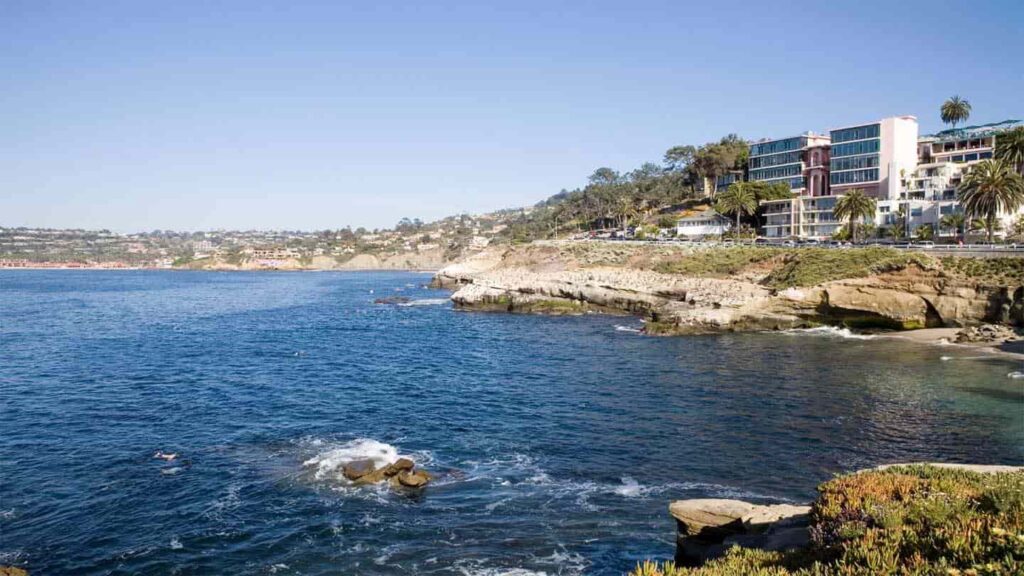
Technical diving is also becoming popular in San Diego, and there’s at least one boat that makes monthly tec diving trips. Because of San Diego’s long military history, many of the tec diving sites are aviation wrecks.
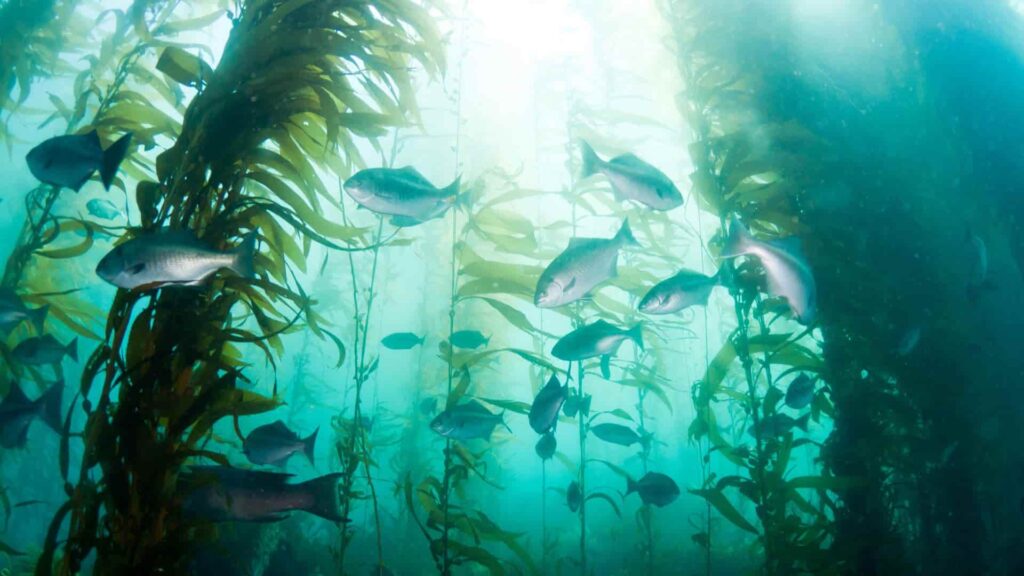
Tips for Scuba Diving in California
Never gone scuba diving in California? Here are a few important things you should know.
- Be Prepared for Tougher Diving: Temperate water diving can be more difficult than tropical diving. For one, you won’t be able to see as far. There are certainly days you can enjoy 40 – 60 foot viz (12 – 18 meters), but on most days you’ll get between 10 – 20 feet (3 – 6 meters). Temperate water diving is also more physically difficult. Since you’ll don a wetsuit, you’ll have to carry more weight to compensate for the extra buoyancy. But don’t let these things deter you—California has stunning dive sites that are well worth exploring. Just understand that the diving isn’t as easy-going as your standard tropical boat dive.
- Book a Guided Dive: Dive sites may have reduced visibility and surge, which can make it difficult to navigate or make a safe entry/exit if you’re not familiar with the site. Book a guided dive with a reputable dive operator if it’s your first time diving in California.
- No Divemasters in the Water: California boat diving is different from tropical boat diving. In California, divemasters stay on the boat during the entire length of the dive. They do not get in the water to lead groups of divers. On a boat dive, you’ll be paired up with a buddy, and it’s up to you and your buddy to plan and execute your dive. Some boat operators offer guides for an extra fee—usually, between $75 – $150, nearly as much as it costs for a spot on the boat. If you don’t feel comfortable diving without a divemaster, and you don’t want to pay extra for a guide, then it’s better to book a guided shore dive.
- Don’t Forget Your Dramamine: On the California side of the Pacific Ocean, the water is not as calm and glassy as it is near the equator. Be sure to take Dramamine / motion sickness pills before you do a boat dive. It’s recommended you take 1 dose of motion sickness medication the night before your dive, and a second dose as you step onto the boat in the morning.
- Be Prepared to Get Sandy: In California, shore diving is the name of the game. Most dive sites are close to shore, so the majority of divers go diving from the beach. In fact, most dive operators in California offer guided shore dives, and not boat dives. Hey, we’re Californians–we can’t get enough of the beach.
- Book Your Ferry Tickets in Advance: If you’re going to Catalina Island, don’t wait until the last minute to book your ferry tickets. Ferry tickets do sell out, especially in the summer months or on holiday weekends.
- Be Mindful of Traffic and Parking: There’s heavy vehicle traffic in California, so keep this in mind if you need to drive to a dive site. Because so many dive sites are near beaches, it can be difficult to find parking on the weekends or in the busy summer months. Always leave your home/hotel early and consider using public transportation if you’re able to. Ask your local dive operator for tips on how to deal with traffic/parking in whichever area you’re going diving.
